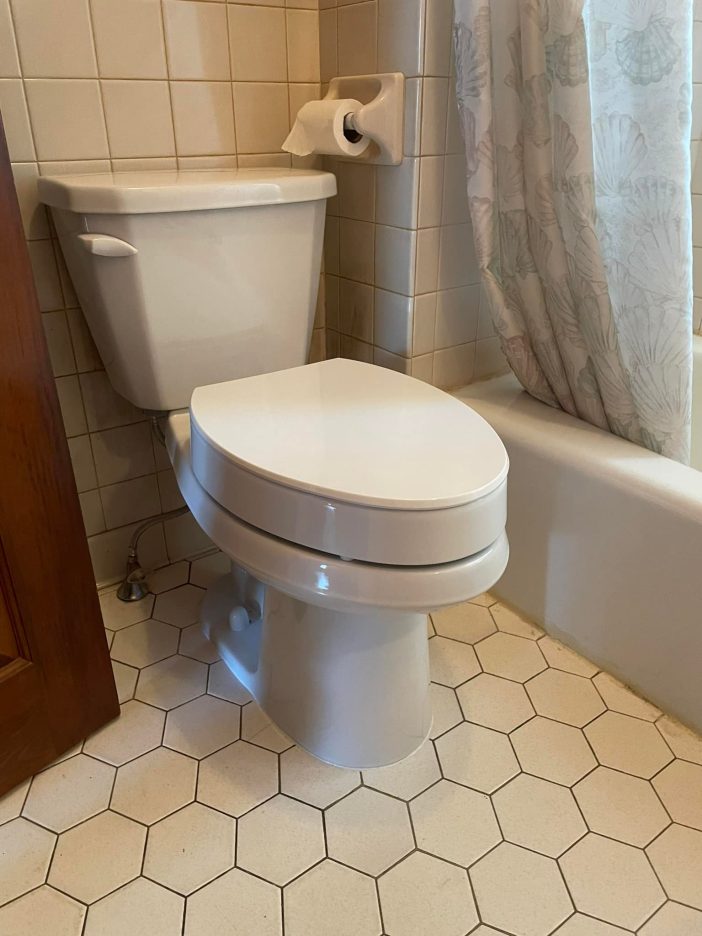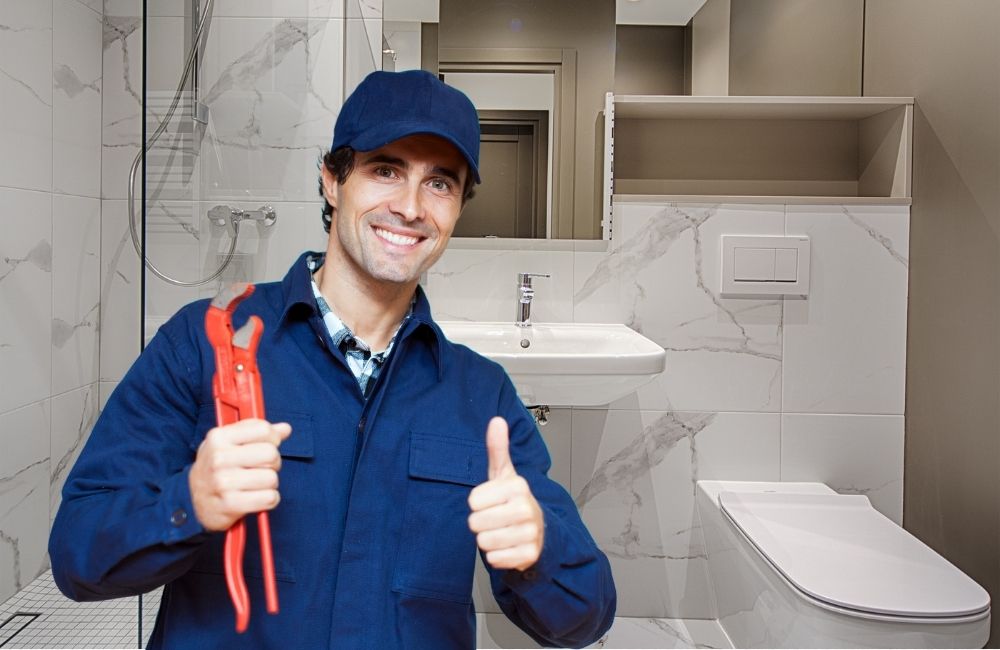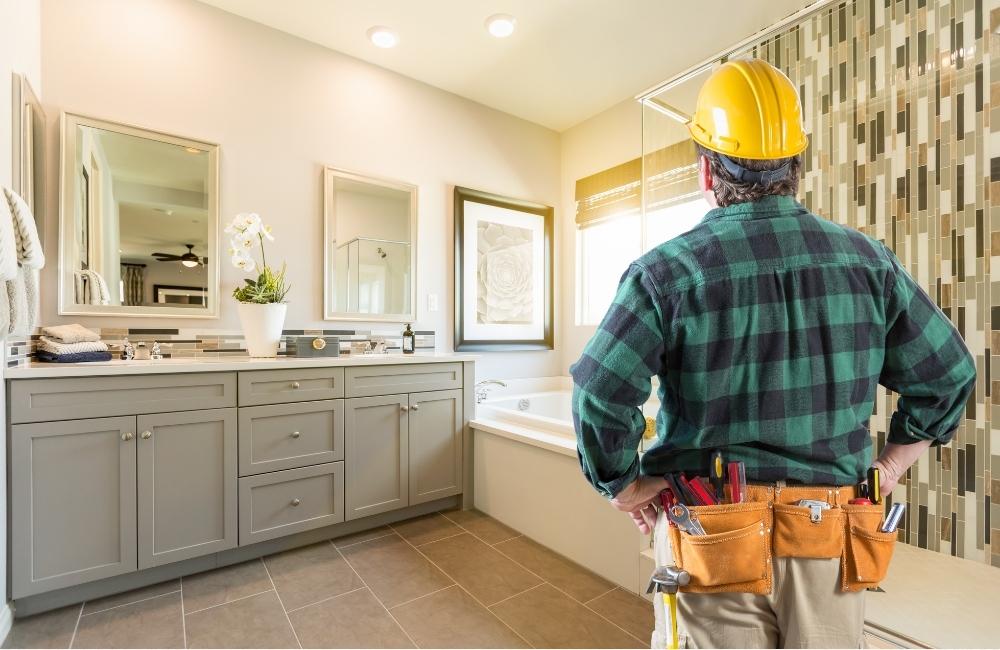Bathroom remodeling is an exciting opportunity to rethink and enhance one of the most important spaces in a home. Beyond upgrading the aesthetics with tiles, lighting, and vanities, plumbing upgrades are a critical component that should not be overlooked. These improvements can significantly enhance water efficiency, functionality, and overall comfort. Here are seven essential plumbing upgrades to incorporate into any bathroom remodeling project.
Table of Contents
Key Takeaways✔ Upgrading to 2-inch drain pipes minimizes clogs, enhances water flow, and ensures long-term functionality for high-use bathrooms. ✔ Hidden tank toilets save space and create a sleek look, while low-flow toilets conserve water and reduce utility bills. ✔ Low-flow showerheads reduce water and energy usage, while handheld models add versatility for cleaning and accessibility. ✔ Anti-scald devices provide consistent water temperature, preventing burns and enhancing safety for all users. ✔ Motion-sensor faucets conserve water, improve hygiene with touchless technology, and offer modern designs with user-friendly features. ✔ Adding a second sink in shared bathrooms reduces congestion and improves convenience, even in compact spaces. ✔ Replacing outdated pipes improves water quality, enhances water pressure, and prevents future leaks or costly repairs. |
Why Plumbing Upgrades Are Essential in Bathroom Remodeling
When remodeling a bathroom, the temptation to focus solely on design elements is understandable. However, plumbing upgrades are vital to ensure the remodel is not just visually appealing but also practical and durable.
- Improved Water Efficiency: Modern fixtures like low-flow toilets and showerheads help conserve water, reducing both environmental impact and utility bills. Implementing water-efficient fixtures, such as low-flow toilets and showerheads, can reduce total indoor water usage by up to 35%, saving the average household approximately 50 gallons per day. These upgrades also contribute to meeting water efficiency standards in many areas, which can qualify homeowners for rebates or incentives.
- Enhanced Functionality: Updated plumbing ensures better water flow, fewer clogs, and a more user-friendly bathroom experience. Enhanced functionality often includes advanced features like thermostatic valves and adjustable showerheads, which improve comfort and convenience.
- Increased Home Value: Buyers are often willing to pay more for homes with updated plumbing, making these upgrades a smart investment. Renovated bathrooms with modern plumbing are also a key selling point in competitive real estate markets.
- Long-Term Durability: Replacing old or outdated plumbing components minimizes the risk of leaks and repairs in the future. Durable materials like PEX or copper provide greater resilience to temperature fluctuations and pressure changes.
- Improved Safety: Upgrading plumbing systems reduces potential hazards, such as leaks that could lead to water damage or mold growth. This ensures a safer, healthier environment for all occupants.
7 Best Plumbing Upgrades for Your Bathroom Remodel
1. Upgrade to Larger Drain Pipes
Most homes are equipped with standard 1.5-inch drain pipes for bathroom sinks and showers. While this size is functional, it is prone to clogs due to the accumulation of hair, soap residue, and other debris. Opting for 2-inch drain pipes is a simple yet effective plumbing upgrade. Incorporating larger drain pipes during bathroom remodeling is a practical way to ensure the space remains functional and hassle-free for years to come.
- Improved Drainage: Larger pipes handle a greater volume of water, reducing the likelihood of slow drainage and clogs. They also allow wastewater to flow more efficiently, preventing backups during high usage.
- Durability: Bigger pipes are less likely to become blocked, ensuring long-term performance with minimal maintenance. Their increased capacity also reduces wear and tear caused by frequent buildup.
- Cost-Effective Upgrade: The cost difference between 1.5-inch and 2-inch pipes is minimal, making this an affordable improvement with significant benefits. Additionally, the upgrade can save money in the long run by decreasing the need for frequent plumbing repairs.

2. Install Hidden Tank or Low-Flow Toilets
Toilets play a central role in any bathroom, and upgrading to a hidden tank or low-flow option can enhance both the design and efficiency of the space.
Hidden Tank Toilets
- Space-Saving Design: Hidden tank toilets are ideal for small bathrooms, as the tank is concealed within the wall, freeing up floor space. This design also creates opportunities for additional shelving or decorative elements above the toilet.
- Modern Aesthetics: These toilets offer a sleek and minimalist look, perfect for contemporary bathroom remodeling projects. Their streamlined design also blends seamlessly with various décor styles, from industrial to ultra-modern.
- Easy Cleaning: Without a bulky tank, the area around the toilet is easier to clean. The wall-mounted design also eliminates hard-to-reach crevices, making overall maintenance quicker and more efficient.
Low-Flow Toilets
- Water Conservation: Low-flow toilets use approximately 1.28 gallons per flush compared to older models that use 3-5 gallons, helping homeowners save water. Upgrading to WaterSense labeled toilets can reduce water usage by 20% to 60%, saving nearly 13,000 gallons annually for an average family. Over time, this significant reduction translates into meaningful environmental and financial benefits.
- Eco-Friendly Choice: Installing a low-flow toilet aligns with sustainable practices and reduces environmental impact. These toilets also help preserve local water supplies by minimizing unnecessary water waste.
- Advanced Technology: Modern low-flow toilets are designed for powerful flushing, eliminating concerns about performance. Many models now include dual-flush options, allowing users to choose between a light flush for liquid waste and a full flush for solid waste.
3. Upgrade to Low-Flow and Handheld Showerheads
Showerheads are a major source of water consumption in any household. Upgrading to low-flow and handheld models is an excellent way to improve efficiency without sacrificing comfort.
Low-Flow Showerheads
- Save Water and Energy: These showerheads use less than 2 gallons of water per minute, reducing both water usage and the energy needed to heat it. This not only benefits the environment but also reduces strain on water heaters, prolonging their lifespan.
- Consistent Performance: Despite using less water, advanced designs ensure a strong and satisfying spray. Many models also include adjustable spray settings, allowing users to customize their shower experience.
- Variety of Styles: Low-flow options come in a range of finishes and designs, making it easy to match them with other fixtures. Homeowners can also choose from wall-mounted, handheld, or rain shower styles to suit their preferences.
Handheld Showerheads
- Enhanced Versatility: Handheld designs make it easier to rinse hard-to-reach areas and are ideal for families, seniors, and pets. They also simplify cleaning the shower or bathtub itself, making maintenance more convenient.
- Accessibility: These showerheads are particularly useful for individuals with mobility challenges, as they offer greater control. Models with adjustable height brackets further enhance their usability for people of varying needs.
- Dual Functionality: Many models combine fixed and handheld features for added convenience. This combination allows users to switch between the two styles seamlessly, catering to different preferences and purposes.
4. Add Anti-Scald Devices for Safety
Temperature fluctuations in water supply can lead to sudden bursts of scalding or icy water. Anti-scald devices are a crucial safety upgrade for any bathroom remodeling project, particularly in homes with children or elderly residents.
- Temperature Regulation: Anti-scald devices maintain consistent water temperatures, preventing burns caused by sudden changes. They are especially effective in homes with older plumbing systems prone to temperature fluctuations.
- Enhanced Comfort: By eliminating extreme temperature shifts, these devices create a more enjoyable showering experience. This consistent water temperature also makes bathing safer and more relaxing for children and the elderly.
- Ease of Installation: These devices can be added to existing fixtures or installed during a full remodel. They are compatible with a wide range of showerheads and faucets, making them a flexible solution for most bathrooms.
5. Install Motion-Sensor Faucets for Efficiency
Motion-sensor faucets are a modern and practical addition to any bathroom. They combine water-saving technology with convenience and hygiene, making them a popular choice for bathroom remodeling.
- Water Conservation: These faucets only activate when needed, minimizing water waste. This feature is particularly beneficial in households with children, as it prevents water from being left running unintentionally.
- Touchless Operation: The lack of physical contact reduces the spread of germs, promoting a cleaner environment. This also makes motion-sensor faucets an excellent choice for maintaining hygiene in shared or guest bathrooms.
- Stylish and Modern: Available in a variety of finishes and designs, motion-sensor faucets seamlessly blend with contemporary aesthetics. Many models also feature sleek LED indicators that enhance the overall look while providing user-friendly functionality.
- Energy Efficiency: Many models are battery-operated and designed to last for extended periods without frequent replacements. Advanced models include low-battery indicators, ensuring uninterrupted use and hassle-free maintenance.
6. Add an Extra Sink for Convenience
An additional sink is a practical upgrade that can transform a bathroom, especially in households with multiple occupants.
- Reduce Morning Traffic: Dual sinks make it easier for two people to use the bathroom simultaneously, streamlining busy mornings. This setup also reduces conflicts and wait times, improving daily routines for families or couples.
- Customization Options: Double vanities come in various styles, from modern floating designs to traditional setups with ample storage. Homeowners can also select countertop materials and finishes that match their bathroom’s overall aesthetic.
- Optimized Space: Even small bathrooms can accommodate extra sinks with compact designs or creative layouts. Corner vanities or wall-mounted options are excellent choices for maximizing floor space in tight areas.
7. Update Old Pipes for Better Performance
Many older homes have plumbing systems made of outdated materials like galvanized steel, which can corrode and lead to leaks. Updating these pipes is an essential step in any bathroom remodeling project.
- Improved Water Quality: Replacing old pipes eliminates issues like rust and sediment buildup, ensuring cleaner water. This upgrade also helps prevent discoloration and unpleasant odors in your water supply.
- Enhanced Water Pressure: Modern materials like PEX and copper maintain consistent water pressure, improving overall performance. These materials also reduce the risk of pressure drops caused by corrosion or mineral deposits.
- Prevent Future Problems: Updating pipes during a remodel reduces the likelihood of leaks and costly repairs later. Proactively addressing old plumbing systems also ensures better compatibility with modern fixtures and appliances.
Why Hiring a Professional Plumber is Essential
While some aspects of a remodel can be handled by homeowners, plumbing upgrades are best left to professionals.
- Expert Installation: Professional plumbers have the knowledge and tools to install fixtures and pipes correctly, ensuring optimal performance. Their experience also allows them to troubleshoot unforeseen issues quickly, minimizing disruptions during the project.
- Code Compliance: Licensed plumbers adhere to local building codes, preventing potential legal or safety issues. This ensures that inspections pass without complications, avoiding fines or the need for costly adjustments.
- Time and Cost Savings: A professional can identify potential problems early, avoiding costly mistakes and delays. Their efficiency in managing materials and labor also helps homeowners stay within their remodeling budget.
- Custom Recommendations: Plumbers can suggest upgrades tailored to the homeowner’s specific needs and the layout of their bathroom. This personalized advice often includes innovative solutions to improve both functionality and aesthetics.
- Warranty Protection: Hiring a licensed plumber often includes warranties on their work, providing peace of mind for homeowners. These warranties cover repairs or adjustments, ensuring long-term satisfaction with the plumbing upgrades.
How to Plan for Plumbing Upgrades During Bathroom Remodeling
- Set a Realistic Budget: Allocate funds for essential plumbing upgrades alongside aesthetic improvements. Be sure to include a contingency fund for unexpected issues, such as the discovery of outdated or damaged pipes during the remodel.
- Coordinate with Designers: Ensure that plumbing upgrades align with the overall design vision and layout. Early collaboration between designers and plumbers can help avoid conflicts and ensure smooth integration of fixtures.
- Consider Long-Term Needs: Plan for future requirements, such as aging-in-place features or additional fixtures. For example, adding reinforcement for grab bars or space for a walk-in shower can future-proof the bathroom.
- Choose Quality Materials: Invest in durable and efficient fixtures and piping to maximize value. High-quality materials also reduce the frequency of repairs, saving money over the lifespan of the plumbing system.
- Research Local Regulations: Familiarize yourself with local plumbing codes to ensure compliance and avoid unexpected delays. Understanding these regulations can also help homeowners better communicate with contractors and ensure everything is up to standard.
Frequently Asked Questions
What are the benefits of installing tandem showerheads during a bathroom remodel?
Tandem showerheads provide dual water streams, offering a more luxurious and customizable shower experience. With options for varying water pressure and spray patterns, they can accommodate different preferences for comfort and relaxation. They are also an excellent way to upgrade a shower into a spa-like feature without requiring a complete overhaul.
How can I refresh my bathroom without a full remodel?
Refreshing a bathroom can be achieved by updating small details like replacing fixtures, installing a new mirror, or upgrading cabinet hardware. Adding ambient lighting or a fresh coat of paint can also enhance the bathroom’s appearance significantly. These minor updates are budget-friendly and can dramatically improve the look and feel of the space without the need for extensive renovations.
What is the average cost of a shower remodel?
The cost of a shower remodel typically ranges from $200 for minor updates, such as new fixtures, to $15,000 for a complete overhaul with premium materials and finishes. Factors like the size of the shower, type of materials chosen, and labor costs all play a role in determining the total expense. Homeowners should plan their budget carefully and prioritize upgrades that align with their needs and preferences.
What common mistakes should I avoid during a bathroom remodel?
Common mistakes include selecting materials without inspecting samples in person, which can lead to unexpected color or texture differences. Overly trendy designs may look outdated in a few years, so choosing timeless elements is often a better long-term investment. Neglecting adequate lighting or storage solutions can also impact functionality, making it essential to plan thoroughly and focus on both form and function.
Is a DIY bathroom remodel feasible?
A DIY bathroom remodel is feasible for individuals with strong skills in plumbing, electrical work, and waterproofing. However, complex tasks like moving pipes or ensuring code compliance may require professional assistance to avoid costly mistakes. Assessing your expertise and being realistic about what you can handle is crucial to achieving a successful remodel without unnecessary stress or expenses.

Transform Your Bathroom with L&P Plumbing in Torrington, CT!
Ready to turn your bathroom remodeling dreams into reality? L&P Plumbing in Torrington, CT, is here to help you create a functional, stylish, and efficient space. With a team of skilled professionals, L&P Plumbing offers not just plumbing upgrades but also comprehensive services like water heater installation, sump pump repairs, and drain cleaning. If you’re a resident of Torrington, CT, L&P Plumbing is your trusted partner for all your bathroom remodeling and plumbing needs. Our expertise ensures seamless installations and innovative solutions tailored to your vision.
Don’t settle for less when it comes to enhancing your home—trust L&P Plumbing to deliver high-quality results that last. Contact L&P Plumbing in Torrington, CT, today to schedule your consultation and take the first step toward your dream bathroom!

